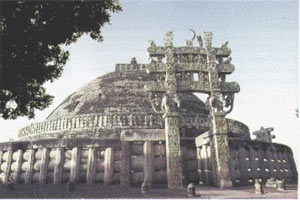By Master of Puppets
Introduction In the year 327 BC Alexander crossed the Hindu Kush. With great difficulty, he conquered pieces of land along the Indus and fought the famous king Poros at the river Hydaspes, where his army encountered elephants for the first time. Alexander won the battle and wanted to move on to the Ganges, the end of the known world. This was where the Okeanos was, the stream that surrounds the entire world. But his soldiers are tired of the strange climate, the battles and the marches, and thus Alexander returned to Babylon. Four years after the crossing of the Hindu Kush, Alexander the Great died and his Empire collapsed. His most important generals fought for tion, Seleukos eventually acquiring he bigger piece of land, including the valley of the Indus. At the beginning of the era that will be known as Hellenistic Age, when Greek culture was spread over much of the known world, from the colonies in Spain to the rainforests of India, another mighty general arose, this time in India. He would be the first to unite most of the Indian subcontinent. His grandson would be known as a bringer of peace. The founder of this new dynasty was Chandragupta Maurya.
The Empire is Founded
In 324 BC. Chandragupta pushed the Macedonian garrisons in Punjab and Sindh out of India. Afterwards he attacked the kingdom of Magadha that controlled the Ganges and conquered it. His mighty army, that he used to conquer the Nnrthern half of the subcontinent, was composed of infantry, cavalry, war elephants and chariots.
Under Chandragupta's rule trade flourished. The treasury was filled and the capital Pataliputra was one of the biggest and most beautiful cities in the world. Chandragupta used his wealth to build up a large governing body.
Just like the first ruler of united China one century later, the first Emperor of this new Empire had a very important advisor. His name was Kautilya. According to his teachings, the state should control everything. Therefore, the Empire was full of spies. However, there also was tolerance towards private enterprise and there was great local autonomy, bounded by the rules of the state. Even the monarch had his duties.
In 305 Seleukos Nikator invaded the Punjab. It is not known whether there was fighting or not, but it is certain that Chandragupta kept the Punjab and annexed three of the richest provinces of Seleukos. The border was moved to the western side of the Hindu Kush. In this way the young empire was secured.
As he got older, Chandragupta became interested in religion. According to Jain tradition, Chandragupta left his throne to his son Bindusara in 301 BC and slowly starved himself to in a Jain monastery.
Ashoka
Bindusara conquered the Deccan highland during his reign of 28 years. His wife (or wives) gave birth to seven sons, including one being rather ugly, called Ashoka.
After the of his father, a struggle for power erupted within the Empire. After four years, Ashoka was victorious and became Emperor in the year 269 BC. It took him eight years to consolidate his power. Then it was time to launch a new campaign; Ashoka invaded the kingdom of Kalinga in southern India and conquered it after a long and y war.
The war was a turning point in Ashoka's life. He was so shocked by the horrors that the war had caused, that he converted to Buddhism in the tenth year of his rule. He rejected the old system of spies and started to rule his Empire in a moral way. Ashoka didn't really bother about the ancient system of castes and had good relations with Buddhists, Jainas and Hindu Brahmans. There were no troops within the Empire, but civil rulers were sent to the provinces so that the central rule was able to take into account local wishes. Laws were strict, but there was peace within the Empire.
To forge these different peoples into one nation, a common identity was required. Therefore, Prakrit was made the official language in the whole Empire with the exception of the utmost North-West, where Greek was an official language too. Ashoka spoke about the Indians as his children, made sure that free hospitals were built for both men and animals were built. During his reign, roads with halting-places were constructed. At the halting-places people could drink, sleep and read wise Buddhistic phrases and royal decrees that had been hewn into pillars.
The army was stationed in the North-West, where the Seleucid Empire was. Ashoka sent ambassadors to Hellenistic areas.
The arts flourished during Ashoka's reign. Beautiful palaces were built, and everywhere in the Empire monastries and stupas, domes where relics were kept or that marked sacred Buddhist or Jain holy places.
The great Emperor Ashoka died in 232 BC. After his civil war erupted and the economy became instable. However, the sons of Ashoka would remain on the throne for 48 years, until the last Emperor was killed by one of his officers. India was divided again. But the Mauryans had proved that unity was possible, and Indian dynasties to follow would try to achieve a unified subcontinent, just like the Mauryans had done.
Emperors
Chandragupta Maurya c.340 - 297 BCE
Bindusara c. 297-272 BCE
Asoka c.272-235 BCE
Kunala
Salisuka
Devavarman
Satadhanvan
Brhadratha c 190 -181 BCE
Chronology
324 Chandragupta drives the Macedonian garrisons from Punjab and Sind.
305 Seleukos Nicator invades, Chandragupta gains 3 provinces and the Empire is secured
301 Bindusara becomes Emperor
269 Ashoka becomes Emperor
232 Ashoka dies, decline begins
184 The Empire collapses
|



